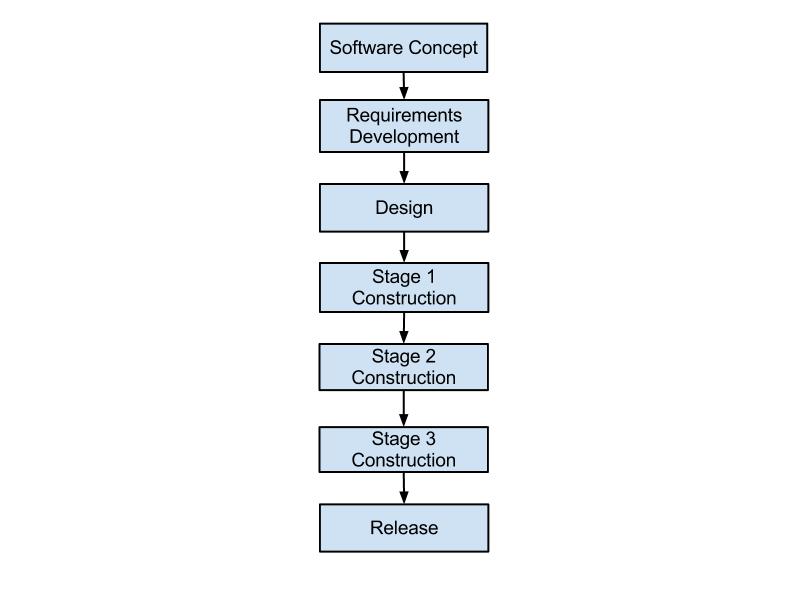Process Methodology
Based on the well-defined requirements provided upfront, we will be using the staged delivery process methodology. This will enable us to perform the same waterfall process activities upfront and deliver new versions of ASKSG to the stakeholders in smaller increments. A visual depiction of this process methodology is shown below.

We will maintain the following internal artifacts throughout the course of the project (note that all artifacts are drawn from the waterfall process, since the staged delivery process is merely a slight variation of this methodology).
- Software Vision and Scope document
- Requirements Specification document
- Use Case Specification document
- Software Design Specification document
- Test Plan document
- Source code
The Software Vision and Scope document will be a deliverable of the Software Concept phase. The Requirements Specification and Use Case Specification documents will be a deliverable of the requirements development phase. And finally, the Software Design Specification and Test Plan documents will be a deliverable of the architecture design phase. The Use Case Specification and Test Plan documents are expected to evolve as the final detailed design, construction, and release stages in the process lifecycle are completed.
To track our progress and maintain these artifacts, we will use the following tools:
- Google Drive for all process-oriented and design-related artifacts
- GitHub for source code management, issue tracker, and configuration documentation
At a high level, our project lifecycle can be partitioned into four separate stages: (1) concept, requirements, and design, (2) stage 1 construction, (3) stage 2 construction, and (4) stage 3 construction. In the first stage we will elicit the full set of requirements from the primary stakeholder and use them to design a software solution for ASKSG. All of the major internal artifacts will be developed during this stage and continually evolved throughout the course of the project as requirements churn and the development schedule inevitably changes. The goals of the remaining three stages can be itemized as follows:
- Stage 1 Construction
- Application skeleton
- Public page for RIT student access
- Basic user login and data persistence
- Support for direct communication between students and SG representatives
- Stage 2 Construction
- Mature data model for social media integration and data mining
- Social network authentication (using OAuth)
- Data aggregation from all supported social networks
- Social network publishing capabilities
- System administration
- Stage 3 Construction
- Data exporting
- Analysis report generation
- Social media data analysis
- Conversation detection through data mining